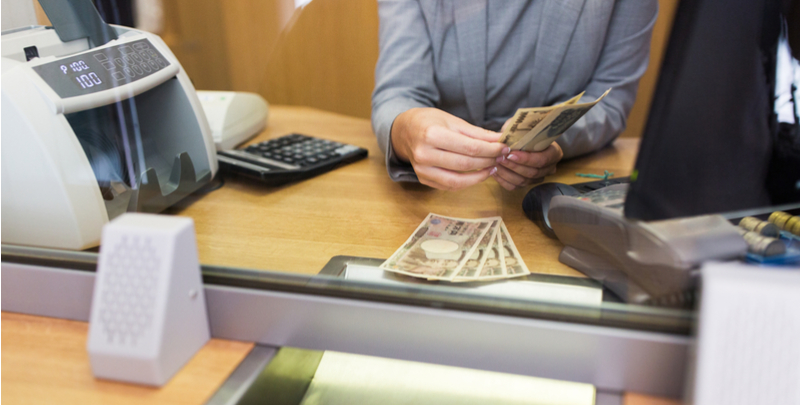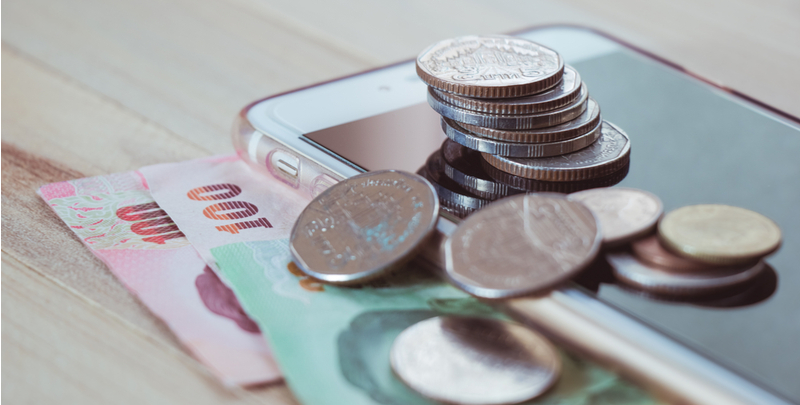Rocket Remit international money transfers in Australia. The fees, rates & how-tos
If you’re looking for a way to send money internationally from within Australia, you’ll no doubt have discovered that now there are a whole range of solutions...

When you’re living or traveling abroad, it’s common to need someone from back home to send you money, or vice versa. There are many traditional methods of sending money overseas - cash, check, bank draft, money order - but these options can be slow, risky or sometimes, like in the case of checks, won’t work at all in a number of countries. To move money from one country to another in the fastest, most secure way, you’ll probably be looking to use an international wire transfer. With a wire transfer, you can send tens of thousands of dollars at once and convert that money into a foreign currency if you want.
Likely due to growing competition, the cost of sending money internationally has dropped in the past few years. In addition to banks, there are quite a few other options these days. Western Union, MoneyGram, PayPal and the industry-changing Wise cater to consumers who need to speedily send large sums of money around the world. But more on that later.
Before you get started, a word.
Banks and money transfer providers often give you a bad exchange rate to make extra profits.
Wise is different. Its smart new technology skips hefty international transfer fees by connecting local bank accounts all around the world. Which means you can save up to 8x by using Wise rather than your bank when you send your money abroad.
Check out how to make your first transfer with Wise. And give it a try. Oh, and while you’re at it, check out Wise's free borderless multi-currency account. Where you can manage and send dozens of currencies all from the same account.
Now, back to what you came here to read.
Wire transfers, especially through banks, do cost more and require more effort than traditional methods, so it’s important to shop around. This article will walk you through the steps of your various options so you can quickly figure out how to get your money from one corner of the world to the other.
A quick peek at what’s to come:
If you’re using your bank, international wire transfers are normally sent through something called the Society for Worldwide Interbank Financial Transactions (SWIFT).

Don’t let the name fool you. SWIFT transfers aren’t all that swift. But they are, at least, common. The SWIFT banking process is the global standard for transferring money from one country to another. Because not all banks have direct connections, the SWIFT network includes participating banks across the world so they can still move money.
The SWIFT network, in some ways, is a bit like travelling via plane. If there’s no direct route from one airport to another, you may need to take a connecting flight or two. The SWIFT network operates in a similar manner. Instead of your money travelling straight from its origin to its destination, there will often be anywhere from one to three banks your money needs to go through to make sure it gets there. Unfortunately, that also means each of those banks take a fee, as well. But more on fees towards the end.
SWIFT oversees the messaging network by which banks and other financial institutions use to send and receive money transfer instructions. Each financial institution in the SWIFT network is issued a unique code between 8 and 11 characters long. This code is known as a bank identifier code (BIC) or SWIFT ID. It’s often referred to as the BIC/SWIFT code. If you need to find a code for a particular bank, or just want to find out more about how it works, check out a SWIFT/BIC Code finder.
In summary what you’ll want to keep in mind about SWIFT transfers:

Some banks ask their customers to come into a branch office to set up an international transfer, while others may offer the convenience of setting it up online. Each bank is different, so you will need to check what your home bank allows.
To make a transfer online, you’ll want to follow these steps:
If you have online banking set up, log into your online bank account and navigate to the wire transfer section of your bank’s webpage. There will probably be a section on the top toolbar at your bank’s homepage.
Alternatively, you can do a Google search for “wire transfer” and the name of your bank. If neither of those methods work, give your bank’s customer service a call. They should be able to steer you to the right place.
Your bank may require you to set an online transfer limit, which is often $5,000. Sometimes they set one for you. If the amount you need to transfer is over your daily limit, you’ll normally need to call your bank to authorize it.
In some cases, in order to verify it’s you making the request, your bank may have an additional security step. This can be anywhere from a special code sent to your mobile phone, or a secure email sent to your email address.
To complete a SWIFT international transfer, you’ll need to provide the following specific information.
The name and address of your recipient’s bank.
Your recipient’s name, address, and the account type they have with their bank (checking, current, savings, money market, etc.).
Your recipient’s account number or IBAN (International Bank Account Number - common in many countries across the world). This information is available upon request from the bank, or appears online or on recent bank statements.
The recipient’s bank’s BIC/SWIFT code. This is a bit like a US routing number or a zip code. It denotes the exact bank the recipient account is in. Your bank may be able to find out the recipient’s BIC/SWIFT code using the recipient’s name and account number or by using an online BIC/SWIFT code finder, but you can also just ask the recipient bank for the information.
When you enter your recipient’s information, the currency of his or her country is often automatically set in the wire transfer form. If not, select the correct currency and then enter the amount of the transfer.
As a general rule, a bank account in a foreign country is denominated in the local currency. And, as a result, you’ll likely want to select that currency. However, it’s not uncommon for foreign banks to offer clients accounts in multiple currencies - especially in US dollars. Double check you’re transferring money in the desired currency. Otherwise, if you try to send money in a currency the account doesn’t support, it’s possible the entire transfer will get rejected.
Your bank will charge you an initial processing fee. It typically runs from $40-$50, though it can be as high as $80 in some cases. The receiving bank may also charge a fee, which can range from $10-$20 (€9-€18). According to mybanktracker, these are the current fees for several large U.S. banks:
| Bank | International Transfer Fee - Outgoing |
|---|---|
| Bank of America | $45 |
| Chase | $50 |
| Wells Fargo | $40 |
| Citibank | $45 |
| U.S. Bank | $50 |
| Capital One | $50 |
| PNC Bank | $45 |
| TD Bank | $40 |
| BB&T | $65 |
| SunTrust Bank | $50 |
However, you’ll still want to be aware that though you’ll be paying one fee with your bank, there will likely be additional fees added by anywhere from one to three intermediary banks, as well as the recipient bank. It can get expensive fast, so be prepared.
After you complete the transfer form, the website will normally show an estimate of how long it’ll take. If you’re lucky, they may give you a timeframe before you even begin. Regardless, though, your bank will track the status of the transfer.
Most transfers take one to three business days depending on a number of factors. For example if the destination bank account is in a drastically different time zone, or they have different days of the week on which their banks work. So you’ll want to keep these things in mind.
Also, as the money doesn’t travel directly from one bank to another, it will take time.

If you’re the type that prefers in-person to online or your bank requires you to come to a branch, then you’ll want to know what to do when you arrive.
After you’ve confirmed with your bank that you can indeed set up an international wire transfer in person, you’ll want to follow these steps:
Your name, and the US bank account you want to transfer from.
The name and address of your recipient’s bank
Your recipient’s name, address, and the account type they have with the bank (checking, current, savings, money market, etc.)
Your recipient’s account number or IBAN (International Bank Account Number - much of the world uses this format for their bank account number). You should be able to find it fairly easily. Ask the bank, check online banking, or look at the most recent bank statement for that code.
The recipient BIC/SWIFT code. Without it, your bank can’t identify the exact bank the money should go to. If you have the bank name and address, but not the BIC/SWIFT code, not to worry. Just use an online BIC/SWIFT code finder and that should help you out.
If you’re not the recipient, you’ll probably want to double check with them before you choose a currency option. Oftentimes, bank accounts are denominated in the local currency - but there are exceptions. Businesses and persons who regularly interact with those in other countries often have multi-currency accounts, or a specific account just for US dollars isn’t uncommon. So make sure you know which currency you’re sending, and how much you want to reach the destination bank.
Your bank will almost undoubtedly charge you a processing fee. Fees typically run from $40-$50, though can be as high as $80 in some cases. Within the Eurozone, transfers often cost €5-€7, plus a percentage of the transfer amount, usually from 0.1-1%. The receiving bank may also charge a fee, which can range from $10-$20 (€9-€18). Check online to find out fees for the 10 largest banks or check with your own.
Once you’ve paid, the clerk will normally notify you how long the transfer will take.

In addition to banks, you have many stand-alone transfers services to pick from. Some services, like PayPal or Wise, are relatively new and make use of the speed and accessibility of the Internet. They may lack the history of an established bank, but don’t let that scare you away. If you’re skittish about high transfer fees, these wire transfer companies are just as secure and reliable as wire transfers through banks.
The tradeoff with stand-alone transfer services is that while the upfront costs might be lower, sometimes, depending on where you’re sending money to, the transfer might take longer than 1-2 days.
PayPal was founded in 1998 and has grown to become one of the most popular resources for making online transactions or receiving payments. It now also offers a transfer service if you’re sending money internationally.
As far as stated fees go, if you’re a Paypal account holder and your account is linked to a bank account, you pay no fees if you’re transferring to the US or Canada. If your account is partially or fully funded using a credit card, debit card, or PayPal credit, PayPal charges 2.9% of the transaction plus a fixed fee, depending on the currency of the recipient’s country.
To wire money to Mexico or another country overseas, PayPal charges a variable amount that’s a combination of a percentage of the transaction amount plus a fixed fee. For more information, check the PayPal website. Based on the PayPal fee structure, it’s much cheaper to make wire transfers with a PayPal account linked to a US bank account than with one linked to a credit or debit card.
Be careful, though. Low upfront fees may cost you more when a transfer is finished.
Global currencies are traded throughout the business day. At any given moment, if you take the median of the price a currency is bought and sold at, you’ll get something called the mid-market or interbank exchange rate. That rate sets the true worth of your money in comparison to other currencies. The problem comes in when PayPal, banks and other services give you a far worse currency exchange rate than the one you find on Google. And pocket the difference.
Essentially, you pay extra, un-advertised fees for your transfer. The additional charges they fold into the exchange rate can cause around 4-6% of the amount you’re sending to vanish.
Ultimately, though, the best way to figure out which option is the cheapest for you is to compare the amount you’ll get in the destination currency before you commit to sending.
Western Union is a transfer service that dates back to the 19th century. For most of its history it was best known for sending and receiving telegrams, but it’s become a major player in the wire transfer market these days. Western Union is now available in 200 countries and deals in 130 currencies.
The fees they advertise vary depending on where you’re actually sending money. When you wire money from a credit or debit card to someone’s bank account, Western Union charges up to $10. And, unfortunately, some major banks in other countries aren’t actually supported - so keep that in mind. However, when you wire money from a credit or debit card to a Western Union branch location or mobile wallet, Western Union charges a stated fee of $5.
If speed is an issue for you, too, then you’ll probably want to skip sending transfers to a bank account with Western Union. Those transfers can take anywhere from 4-8 business days. On the flip side, when you make a transfer with a credit or debit card for cash pickup at a local branch, the transfer takes mere minutes.
However, as with PayPal, if saving money is your style, beware of Western Union’s essentially hidden fees. A simple online currency converter tells you how much your money is actually worth. And if you plug those numbers into the sending currency field, even accounting for the Western Union fees, you’ll find that a chunk of your money is missing from the destination currency field. Up to 6%. Basically, Western Union hides extra, unadvertised fees in the exchange rate. You get a poor rate, and they profit. Though 6% may not sound like much at first glance, when you add it to the fees already charged, that amount can start to add up, fast.
So, before you submit your order, make sure to find out the exact amount you’ll get in the end. It never hurts to take a few minutes to shop around, compare and do your research.
While many banks appear to offer competitive fees for transfers, they generally give you poor exchange rates to take more money out of your pocket. And if you factor in all of those extra international SWIFT fees, the amount you’ll actually be charged can feel pretty overwhelming.
For a different transfer option, consider Wise. Wise sends out money locally, using local bank systems -which avoids those nasty international transfer fees. All you’ll need is the local bank details of where you’re sending money to and then Wise uses the real exchange rate - the same one you see on Google - and simply charges a low, upfront fee. No hidden charges. No unwelcome surprises. Transfers through Wise, depending on which currency you need, can be up to eight times cheaper than regular banks and transfer services, leaving you plenty of extra cash to spend on the fun stuff.
And if you regularly send money across borders, consider signing up for a borderless account. You can store your money in dozens of different currencies and pay or get paid with local bank details in the US, the UK, the EU, and Australia.

Every transfer service you use will offers a slightly different exchange rate, so before you finalize a transfer with a specific provider, it’s good practice to check how their rate stacks up against the standard exchange rate.
Exchange rates change daily. To check the latest rates, use Google’s simple currency converter. Open a Google tab and enter “currency converter” into the search bar. Set the baseline currency (top field), and then the currency you are converting to (bottom field). Then enter an amount in the baseline currency field, and the tool automatically converts it into the second currency.
When you know how much your initial transfer amount converts to at the real exchange rate, you can then compare that amount to the amount a bank or wire service quotes you, and see who offers the best deal.
Don’t get shortchanged. Do your research - you won’t regret it.
*Please see terms of use and product availability for your region or visit Wise fees and pricing for the most up to date pricing and fee information.
This publication is provided for general information purposes and does not constitute legal, tax or other professional advice from Wise Payments Limited or its subsidiaries and its affiliates, and it is not intended as a substitute for obtaining advice from a financial advisor or any other professional.
We make no representations, warranties or guarantees, whether expressed or implied, that the content in the publication is accurate, complete or up to date.

If you’re looking for a way to send money internationally from within Australia, you’ll no doubt have discovered that now there are a whole range of solutions...

Sending money overseas is no longer confined to complex bank transfers, making it easier than ever to send funds to friends and family overseas. Whether for a...

Sending money overseas can seem complex if you’ve never done it before. Unlike transferring domestically, there can be differences in fees, transfer times and...

Have you ever wondered about the safety behind sending money abroad? Well depending on which provider you choose can vary how safe your money and account will...

The online space can be like the wild west, especially when it comes to moving money. As the demand for secure financial transactions grows, concerns...

In a world where online transactions have become increasingly the norm, concerns about security and reliability are paramount. With so many providers and...